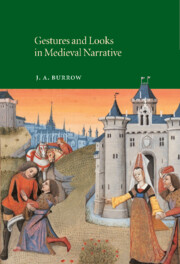1 - Introduction
Published online by Cambridge University Press: 22 September 2009
Summary
Much attention has been paid in recent decades, by social psychologists and others, to non-verbal communication – those forms of bodily behaviour, supplementing or replacing speech, by which people convey their thoughts and feelings to each other. Modern experts have studied, often in minute detail, such things as facial expression, gaze, gesture, and posture. When medieval commentators touched on these matters, as they sometimes did, they were most often concerned with gestures, and in particular with what was proper or improper in such bodily movements – the disciplines of decent gesture. There was also at that time, however, a scholastic tradition which considered non-verbal messages as part of a general theory of signs, signa – for semiology, though the term is modern, was not the creation of Peirce or Saussure, as their successors sometimes claim. A main authority for such discussions ‘de signis’ was a section of the De Doctrina Christiana of St Augustine; and since Augustine's understanding of the matter lies quite close to that adopted in this book, it seems appropriate to start with what he has to say.
At the beginning of Book Two of the De Doctrina, Augustine turns from ‘things’ (res, the subject of Book One) to ‘signs’ (signa). After offering a general definition, he goes on to draw a distinction: ‘Some signs are natural [naturalia], others given [data]’.
- Type
- Chapter
- Information
- Gestures and Looks in Medieval Narrative , pp. 1 - 10Publisher: Cambridge University PressPrint publication year: 2002



